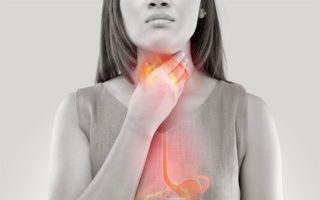


The stomach is rich in hydrochloric acid. The acid functions as a sterilizer by killing microorganisms present in food and helps in the digestion of protein-containing foods. The acid also helps to maintain the acidic pH of the stomach. Despite the many roles that hydrochloric acid plays in your stomach, it can also impose some health complications, according to our acid reflux treatment specialist in Los Angeles. The primary health complication that roughly 60 million Americans experience from the acid is acid reflux disease. The disease mainly manifests as heartburns and discomfort of the chest.
However, heartburns are common after eating foods that trigger the production of hydrochloric acid. Therefore, experiencing heartburns on a rare occasion is normal, according to an acid reflux specialist in Los Angeles. It only causes alarm when the heartburns occur at least twice a week. When this happens, you should seek the services of our acid reflux specialist.
So how does acid reflux occur? There are two rings that enclose the stomach; one at the entrance and another at the exit. The ring at the entrance is referred to as the lower esophageal sphincter. This sphincter’s function is to prevent the regurgitation of acid and food from the stomach to the esophagus. It achieves the function by contracting its muscles to close the sphincter. When acid frequently regurgitates to the esophagus, your LA gastroesophageal reflux doctor will suspect weakness of the lower esophageal sphincter muscles. Weak muscles will not be able to adequately close the sphincter causing acid reflux. A gastroesophageal reflux doctor will diagnose you with acid reflux disease when you have heartburns more than twice a week. The condition is popularly known as gastroesophageal reflux disease (GERD).
The disease presents differently in different patients. Additionally, a Los Angeles acid reflux specialist noted that the symptoms can be dominant at different times of the day in different patients. Some of the symptoms include:
The above symptoms are general in most patients. However, some symptoms are unique to patients who experience acid reflux at night. They include:
Due to the chronic cough, you may have difficulties staying asleep. This may lead to irregular sleeping patterns such as sleeping during the day to make up for the inadequate sleep at night.
Acid reflux disease can also affect infants. Some of the symptoms of the disease unique to infants include:
There are several causes of the disease. The causes also vary from individual to individual. Common causes include:
Other minor causes of acid reflux disease include sleeping immediately after eating and overeating.
When you have acid reflux disease, you frequently visit different types of doctors such as head and neck doctors, laryngopharyngeal reflux specialist in LA, and a gastroesophageal reflux doctor in LA. This is because the disease symptoms can also involve other organs of your body like the larynx. The disease needs long-term treatment and can be managed with a combination of injections and oral medications. A crucial part of the disease’s management is avoiding foods and drinks that can trigger acidity, such as spices and tea, respectively.
If you are experiencing any discomfort or pain, contact our ENT doctor in Los Angeles today!